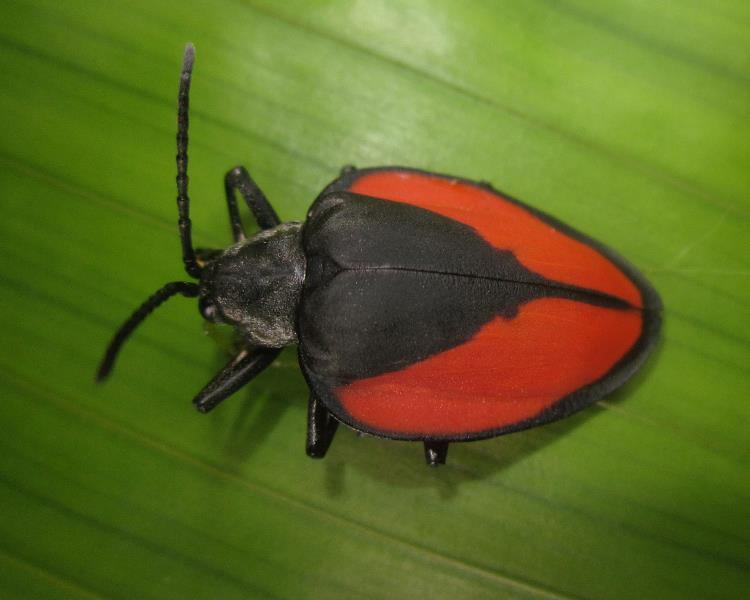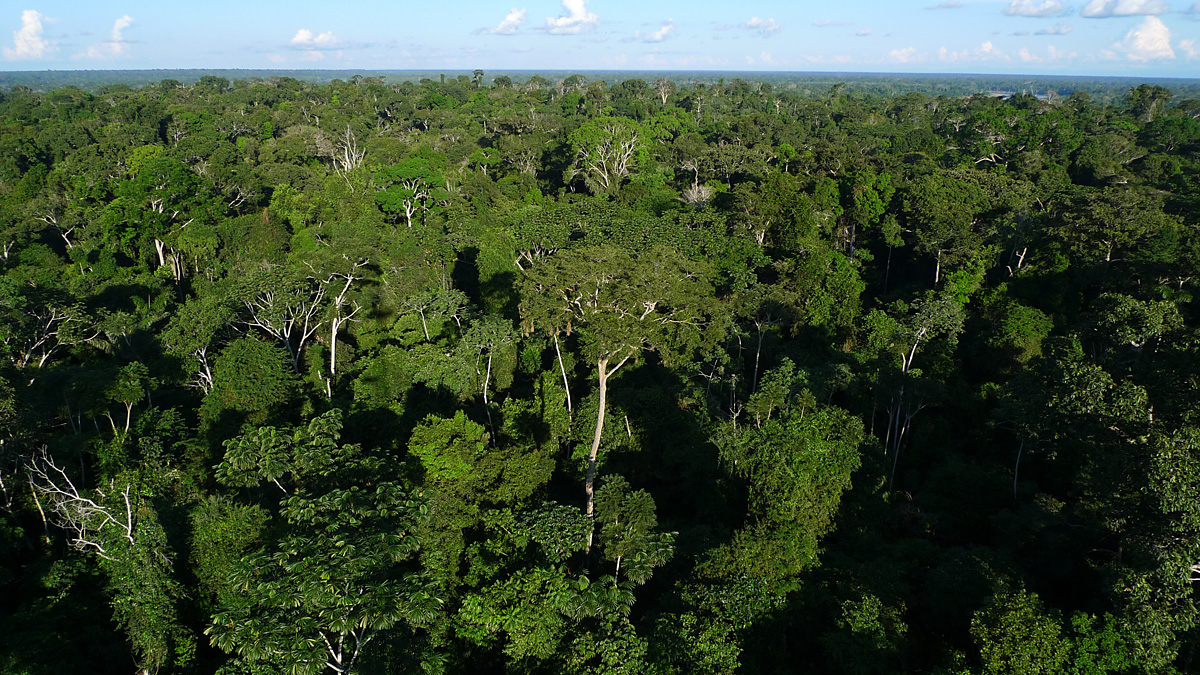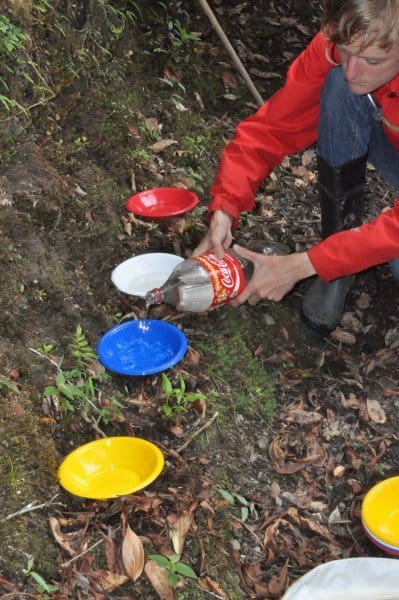- Caroline Chaboo has been documenting beetle diversity in the Peruvian forests since 2008.
- She focuses on leaf beetles, one of the most commonly encountered groups of beetles.
- Mongabay spoke with Chaboo about her love for beetles, and her work in Peru.
Beetles are everywhere.
Of the roughly 1.5 million species described so far, beetles account for around 400,000 species, making them the most species-rich group known in the world. In contrast, birds account for only around 10,000 of all described species, while only 5,600 of all known species are mammals.
Beetles are incredibly adaptable and diverse. They have learned to use a wide variety of habitats, and have become very specialized in the process, playing crucial roles in the ecosystem. They are important pollinators, recyclers, scavengers and decomposers. Much of beetle diversity, however, is yet to be uncovered.
In Peru, Caroline Chaboo, an Assistant Professor at the University of Kansas, is doing just that. Since 2008, she has been meticulously collecting beetles in the Peruvian forests, hoping to build an accurate picture of the rich beetle diversity there.
“We know now that there are around 10,000 species of beetles in Peru, and there are many, many new species awaiting discovery and description,” Chaboo told Mongabay. “My work in Peru is analogous to documenting all the bird species in the world.”
Chaboo — fondly called a “bug doctor” by her seven year-old daughter — focuses on leaf beetles, one of the most common groups of beetles. Her love for beetles has taken her to Africa, where she lived with the San indigenous peoples to see how they use toxins from leaf beetles to make poison-tipped arrows.
In Peru, Chaboo works in one of the most biodiverse regions in the world — around Manu National Park and Kosnipata Valley. This region has a tremendous diversity of birds, mammals and insects, and is home to a number of indigenous groups. This place is also threatened by mining, logging and agricultural plantations. Chaboo hopes that her beetle surveys will showcase the value of the Peruvian forests, which can then help protect them.
Mongabay spoke with Chaboo about her love for beetles, and her work in Peru.

Biological station. Photo by Caroline Chaboo.
INTERVIEW WITH CAROLINE CHABOO
Mongabay: What got you interested in beetles?
Caroline Chaboo: My family’s from India. But I grew up in the Caribbean, in Trinidad, and I was lucky to have good teachers. I’ve always been a systematist at heart because I collect things. I liked insects, and I built my own museum at home. When I moved to New York, I worked at the Natural History Museum there. I saw American researchers collecting insects, and they would use all kinds of strange contraptions to collect the insects, which got me fascinated.
I got a scholarship one summer from my university to spend a month at a field station. There were many visiting researchers there and I got to see what they were doing. I fell in love with insects there. The Natural History Museum at New York has the fourth largest insect collection in the world and I had all the free time in the world to go through the specimen drawers. In parallel to that I started learning about the insects and what kinds of questions I would want to ask.
I liked the really colorful insects, and for various reasons I ended up choosing leaf beetles, which are very colorful. I did a master’s degree with a well-known beetle expert, then my Ph.D. So once you pick a group and pick some questions, you kind of keep specializing in that area, and I’ve been doing that for a long time.
Mongabay: What do you find most fascinating about leaf beetles?
Caroline Chaboo: The diversity. Why are there 14,000 leaf beetles? Why are there 10,000 bird species in the world, or 5,500 mammals? Why was evolution so uneven that some groups became huge and some groups are small. We rank leaf beetles at the top five in insect diversity. The world outside looks the way it does largely due to beetles. Flowers evolved because of beetles. So my attraction to them is this extraordinary diversity and what are the factors that lead to this diversity.

But this view is threatened by increased gold-mining (legal and illegal), oil palm and cocoa cultivations, logging and habitat conversion. Photo by Caroline Chaboo.
Mongabay: What drew you to Peru?
Caroline Chaboo: Again, the diversity question. At some point as a biologist you have to commit to places. You can’t just keep flying to every place, although I would love to do that. But it takes a lot of time to cultivate the right people, the permits, to learn how to work in a place. I also had a child, she’s seven now. So that brings up a different set of considerations — how long does it take to get to a place, how effective and efficient will my work there be, how fast can I come home.
I first went to Peru on a scholarship from the Amazon Conservation Association. I stayed at their field station, and there I realized how much there is and how much is unknown. And the unknown can be extremely attractive as a research problem.
I already knew that Peru was one of the top biodiversity hotspots in the world. Peru has the highest number of birds, the highest number of plants, the highest number of ferns. Because of leaf beetles’ relationships with plants you can predict that if a place has high plant diversity, it will have high diversity of herbivores. So I kept going back, and realized that there’s a lot to do there.
Mongabay: Which region in Peru are you focusing on?
Caroline Chaboo: I am highly focused on Manu National Park and buffer zones in Kosnipata Valley within my broader lens of Peru biodiversity. On the edge of Manu National Park, Amazon Conservation Association has three main field stations. We had access to these field stations and could build a long-term research project.
The three field stations are at different elevations, and I could access very different kinds of forests at these stations. There are two regions of hotspots here: one where the lowland forests meet the high elevation forests, and a second band of hotspot where the high elevation grasslands meet the forests. So just based on the landscape I could predict that this was a zone of high diversity.
Horizontally too, a rainforest is not the same throughout. Depending on the nature of the drainage basin, the river flow, or soil type, you can get variations within a rainforest. So you can get big patches of bamboo forests, palm forests, swamps where these rivers form oxbow lakes, and all this adds to diversity, besides the internal dynamics of the forests.

Mongabay: What are you working on currently?
Caroline Chaboo: At this point now, I’ve been collecting beetles in Peru since 2008. We have just finished a massive project, kind of the first wave of the analysis of my data. We’ve worked with more than 50 beetle experts from around the world, all over central South America and Europe. There are about 200 families of beetles in the world, and we have now documented 100 families of beetles in Peru.
Now, we are on a species-describing spree for beetles of Peru. I think this is going to be a lot of fun because the foundation has been built very solidly. We know what’s in the museums. I have all these great collections, and we have assembled all the literature. We have figured out the correct names, and I have the best people in the world to put laser attention on this. So it is very exciting.

Mongabay: Could you talk about your field work?
Caroline Chaboo: As a Professor at the University of Kansas, I’ve been free to develop certain courses to teach, and one of the courses I developed is a Field Biology Program with a research component. So I take between 6 to 14 undergraduate students with me on a field expedition.
Once we’ve arrived at the field stations, we take on a whole lot of different kinds of collecting equipment and head out. For example, if you want to collect insects that are flying at a low level in the forest, just above the forest floor, you will use certain kinds of traps. If you want beetles living in the mid canopy, you will need another set of traps. Similarly, leaf litter has its own beetle fauna, trees that have fallen over have a different set of insects.
So I set up a trap, and then everyday teams of students go and clean out the traps of the specimens. They make sure we have enough ethanol in the traps to kill the insects when we catch them. Other students walk trails and look at certain plants to collect beetles from. We might see fungus growing, we collect those and rear the insects out of the fungus.
Beetles are amazing that way. They partition a habitat in thousands of ways. So you can use broad collecting methods but you have to combine them with specialized collecting methods. I am hoping that now that we have these 50 plus experts, each expert will have their own little toys and gizmos and ways of looking at the forest that will give us a truly accurate species list.
There is one group of insects, for instance, that only flies at dusk and dawns (think of fireflies). Now, I’m doing all these trapping methods, so I’m exhausted at dusk and dawn. To get a truly accurate species list of that group, I need someone just focused on collecting beetles only at that time of the day. Then there are some insects that only come to carrion or rotting meat. So someone will have to be focused on just that group of beetles. For my group, I need to know the species of the plants.
Using my broad collecting methods we have a baseline of what beetles are there in Peru. To this, we need to add a layer of additional specialized collecting methods, and sample many different habitats. We need to go to the top of the Andes, to the coasts and deserts.
A total accurate species inventory for Peru for insects will require manpower, complicated set of trapping methods, and sampling of the diversity of habitats in Peru.

Mongabay: How will an accurate species inventory of beetles help?
Caroline Chaboo: I want Peruvians, especially, to know about this extraordinary treasure that they have. Most of the population of Peru lives on the coastal side of Peru, on the desert, and when you have a desert ecosystem, how do you comprehend a rainforest? And when you are making political decisions about the Amazon side of Peru, do you have the same values? But if they knew about their own biodiversity, we could perhaps influence their decision about which habitats are more important than others and which ones must be absolutely protected.
In general beetles are so diverse that they inhabit every niche — they are recyclers, decomposers, scavengers, and pollinators. So their roles must be understood to value and protect forests.
Mongabay: Does your daughter accompany you to the field?
Caroline Chaboo: She’s seen me collecting in Kansas, and other places. But she’s not been to a major expedition in Peru yet. She knows how to collect though, and she can hike. And because I collect insects, she calls me a bug doctor.